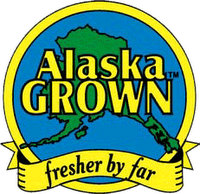 If you have been reading Beyond Breakfast for awhile you might remember that I used to live in Fairbanks, Alaska, where two of my best friends worked for the University of Alaska Fairbanks Cooperative Extension doing food research and education outreach. I recently reached out to my friend Kate Idzorek to talk with her about her job in an extension test kitchen. Kate’s official job title is Food Research Technician; I have spent time in her amazing kitchen watching her cook up some delicious foods!
If you have been reading Beyond Breakfast for awhile you might remember that I used to live in Fairbanks, Alaska, where two of my best friends worked for the University of Alaska Fairbanks Cooperative Extension doing food research and education outreach. I recently reached out to my friend Kate Idzorek to talk with her about her job in an extension test kitchen. Kate’s official job title is Food Research Technician; I have spent time in her amazing kitchen watching her cook up some delicious foods!
In the past Kate has worked with small producers in Alaska, assisting them in starting their food-based businesses. Most recently Kate has been working with farm-to-school projects to develop healthful recipes, using Alaska-grown and produced products, that will meet the upcoming meal pattern changes, as well as support the local producers and local economy. Working with Alaska-grown barley, Kate has been developing a hamburger bun/dinner roll that will meet the 51% whole grain requirement using a combination of barley and wheat. “There is some wheat production up here,” Kate explained, “but barley is heartier and better suited for this climate. We have to use a combination of both barley and wheat to obtain that 51% because barley has very different qualities than wheat when used in yeasted breads. If the ratio of barley to wheat flour is too high, the outcome will be sticky and unpalatable. We have found a good ratio of 15% barley flour, 36% whole wheat flour, and 49% all-purpose flour.”
Kate is also working on a chocolate chip cookie with barley flour for the schools’ a la carte menu, and speculates that she will end up using 25-30% barley flour in the recipe in order to deliver a good portion of fiber. (Does anyone else want to volunteer as a taste tester? I know I do.) In addition to the cookie, Kate will soon begin developing another recipe, using barley flour: a muffin that is currently being served on the breakfast menu. Regarding the breakfast muffin, Kate says, “We hope to make further changes in addition to the increase in whole grains, to ensure this is a healthful product that will be able to be offered, even after the new meal patterns go into effect. I have not started the recipe development for the muffin, but I feel it has excellent potential.”
I am looking forward to hearing more from Kate about the Alaska-grown barley recipes that are coming out of her test kitchen. As someone who has eaten many meals prepared by her hands, using Alaska-grown ingredients, I can vouch for Kate’s talent in the kitchen. I hope when I visit in November she will bake a test run of those chocolate chip cookies for me, too!
Many thanks to Kate, and the UAF Cooperative Extension, for sharing their story and the recipe with us.
RECIPE
51% Whole Grain Hamburger Buns
Yield: 24 hamburger buns – 3″x3″ (or 36 dinner rolls)
Ingredients and measurements by weight
52 grams yeast
880 grams water
180 grams sugar
888 grams All Purpose Flour
272 grams Barley flour
652 grams Whole wheat flour
20 grams salt
72 grams non-fat powdered milk
180 grams vegetable oil
52 grams honey
Instructions
Knead 10 minutes in electric mixer with dough hook.
Let rise until doubled in size.
Punch down and form into 24 hamburger buns or 36 dinner rolls and place on sheet pan.
Let rise until doubled in size.
Preheat oven to 400 degrees F.
Bake rolls 15 minutes or until golden brown and they sound hollow when you tap them.
Remove from oven, let cool on cooling rack.

Christina
Christina
Pingback: Alaska’s Farm-to-School Program Finding ‘Room for Extension’ Thanks to UAF
Pingback: Alaska’s Farm-to-School Program Finding ‘Room for Extension’ Thanks to UAF
Pingback: April is National Garden Month—How Does Your School Garden Grow?
Pingback: April is National Garden Month—How Does Your School Garden Grow?
Fermin
Christina